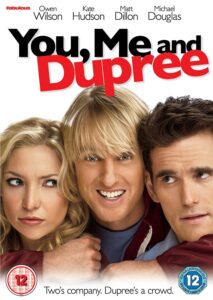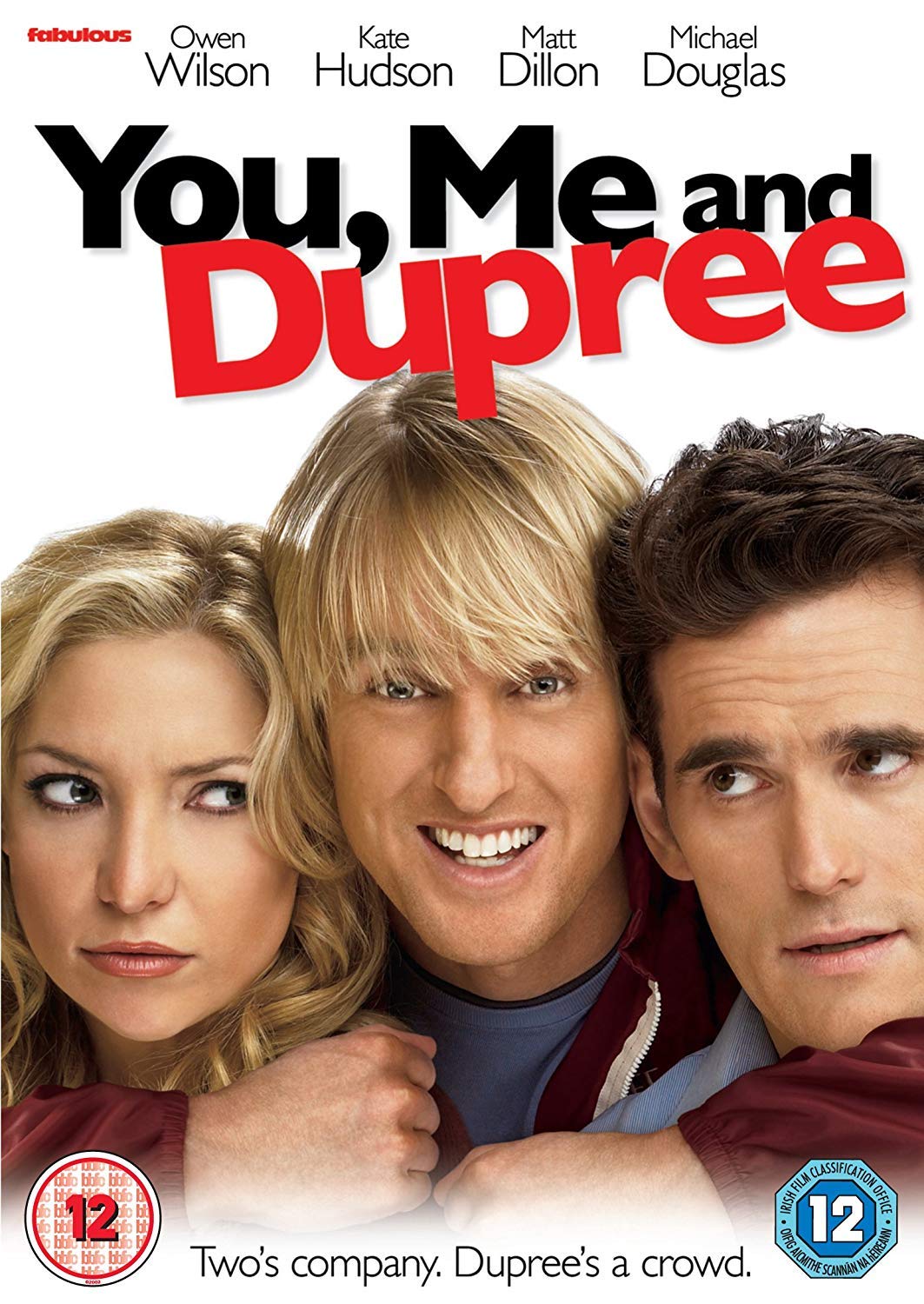You, Me and Dupree
Posted on July 11, 2006 at 11:10 am
C-| Lowest Recommended Age: | Mature High Schooler |
| MPAA Rating: | Rated PG-13 for sexual content, brief nudity, crude humor, language and a drug reference. |
| Profanity: | Some strong and crude language |
| Alcohol/ Drugs: | Drinking and smoking, characters drink when under stress |
| Violence/ Scariness: | Some violence, mostly comic, some characters injured |
| Diversity Issues: | Some may be offended by reference to a Mormon character |
| Date Released to Theaters: | January 1, 1970 |
| Date Released to DVD: | January 1, 1970 |
| Amazon.com ASIN: | B000ICM5X0 |

Adorable newlyweds Molly (Kate Hudson) and Carl (Matt Dillon) are just back from their honeymoon when Carl’s best friend Dupree (Owen Wilson) loses his job and his apartment. So, Carl invites him to stay with them for a few days.
But Dupree is a case of arrested development crossed with poor impulse control who somehow missed that train to grown-up-ville. He breaks things. He intrudes. He creates chaos. He seems hurt that he isn’t Carl’s top priority anymore, even jealous. So, he does what has always worked at getting Carl’s attention. He listens and supports Carl and he encourages him to go back to a carefree bachelor life.
While this is going on, in what appears to be a plot from another movie, Carl is having problems with Molly’s over-attached and highly competitive father (Michael Douglas), who happens to be his boss, and gives him a big promotion while urging Carl to change his last name and get a vasectomy.
There have been many memorable, touching, and very funny movies about free-wheeling character who shake up the lives of sober, responsible people, but this is not one. It is unpleasantly misogynistic, the women all prudes and scolds, the men all terrified of what might happen if they break the rules.
Wilson, who also produced, switches directions mid-movie. Dupree starts out as an immature clod and then turns into a supposedly-loveable Lost Boy who was somehow left behind and serves as an innocent inspiration until he is lucky enough to find his own path to growing up. That’s where the movie goes off the rails. Wilson makes the same mistake the character does of assuming that he is irresistibly forgiveable, a crime in itself unforgiveable. He wears out his welcome even faster than Dupree does.
Parents should know that this has some very strong material for a PG-13, including some strong and crude language and sexual references. A character is called a slut, characters talk about porn and discuss titles of various Asian porn movies, and a character masturbates to porn, there is discussion of vascectomies with a diagram showing what is done. The movie has some violence, mostly comic, with minor injuries. For no reason whatsoever, a minor character is supposed to be Mormon and therefore straight-laced.
Families who see this movie should talk about friends who are not always accepted by their families and how sometimes we can be close to people and then grow in different directions or have to rethink the relationship when the other person does not grow. They should also talk about why it was hard for Carl to talk about his feelings and why Molly and Carl liked different things about Dupree.
Families who enjoy this movie will also enjoy The Odd Couple and The Man Who Came to Dinner. A slyly spicy movie about a three-way relationship is Noel Coward’s Design for Living. Families will also enjoy some of the cast’s earlier work, including Dillon’s My Bodyguard and Wilson’s Bottle Rocket. Charles Dickens wrote about Dupree-like characters Mr. Dick in David Copperfield and Harold Skimpole in Bleak House.

